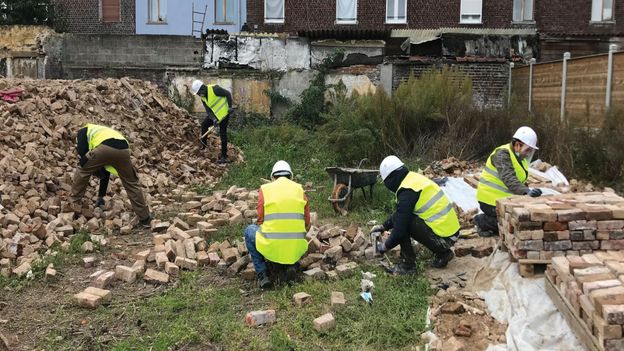A key to successfully mining the Anthropocene for our future built environment is working out ways to re-use existing materials in myriad forms. Folke Köbberling, a professor of architecture-related art at Technical University Braunschweig in Germany, has spent years honing ways to re-use materials. “Using found material is different to working with brand new materials, ” she says. “These materials have a story. We look for materials and try to use them as they come in a very flexible way.”
One example is the amphitheatre she and colleague Martin Kaltwasser constructed in 2008 at the Wysing Arts Centre just outside Cambridge in the UK. Made primarily from 400 wooden pallets rescued from local construction sites, it also features windows from old glasshouses and teak floors repurposed from discarded Cambridge University shelves. Built for a total cost of just €5,000 (£4,270/$5,660) the building was envisaged to provide a distinctive arts venue for two years before being taken apart to re-use its materials elsewhere. But it is still going strong.
Köbberling has also found that discarded raw sheep wool acts as superb wall insulation and pollution filter, and has turned thousands of plastic bottles and cups discarded at the Berlin Marathon into material for bus shelter roofs.
Connecting the supply of these materials with the demand for components is a key element in the drive to reinvent “waste” as new construction materials. “We have to find a way to create prosperity and added value not by the production of new goods but from the maintenance and management of existing goods,” says Michael Ghyoot, co-founder of Brussels-based design firm Rotor, one of the companies driving efforts to make reuse easier for building professionals.
Rotor has teamed up with other firms across Europe in an EU-funded project to build up an online directory which has so far signed up just over 1,000 specialised salvage dealers and allied businesses (the original target of signing up 1,500 was primarily hindered by the global pandemic). It is also creating a pre-demolition tool kit to help businesses assess the re-use potential of materials and products present in buildings slated for demolition or redevelopment.


